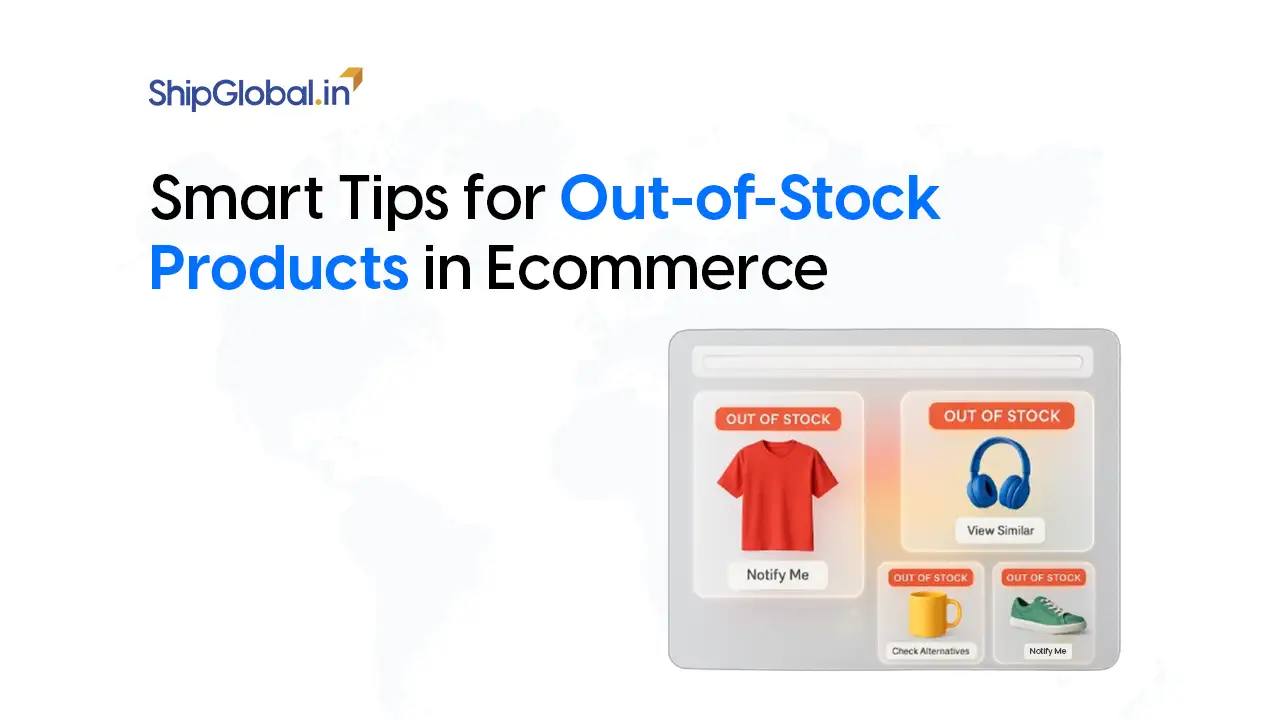When we think of logistics, we usually picture packages moving from warehouses to end customers. But what happens when things go the other way — when a product needs to return to the seller, manufacturer, or even a recycling center? That’s where reverse logistics comes into play.
In today’s world of e-commerce, returns are more common than ever. Whether it’s a shirt that didn’t fit, a gadget that arrived damaged, or simply a change of mind, businesses now have to manage the journey back just as efficiently as the one forward.
Now think about something more traditional: a glass bottle returned to a store after use. It’s cleaned, sterilized, and reused or recycled by the manufacturer. That, too, is reverse logistics — just in a different form. Reverse logistics goes far beyond online shopping. It also includes repairs, maintenance, recycling, unsold inventory, and even rented equipment returns.
So, what exactly is reverse logistics? Why is it becoming such a crucial part of modern supply chains and a big deal for businesses of all sizes? Let’s break it all down in today’s blog.
What is Reverse Logistics
Reverse logistics refers to all the operations related to the movement of goods from the end customer back to the seller, manufacturer, or disposal facility. It’s a key component of supply chain management that ensures efficient handling of post-sale product activities. These operations are not limited to but often include return in supply chain management, such as when customers send back products due to defects, dissatisfaction, or warranty claims. Along with returns, reverse logistics also covers repairs, refurbishment, recycling, disposal, and reselling.
Unlike traditional logistics (also called forward logistics), which focuses on delivering products to customers, reverse logistics deals with the flow of products going in the opposite direction. Managing return in supply chain management efficiently helps businesses reduce costs, improve customer satisfaction, and contribute to sustainability goals.
Key Differences Between Reverse and Traditional Logistics:
| Aspect | Traditional Logistics | Reverse Logistics |
|---|---|---|
| Direction | Supplier to customer | Customer to supplier |
| Goal | Sales, fulfillment | Recovery, sustainability |
| Complexity | Predictable process | Unpredictable and condition-based |
| Customer Role | Receiver of products | Initiator of returns or repairs |
So, while traditional logistics is about delivering value, reverse logistics is about retaining that value — even after a product leaves your hands
5R’s of Reverse Logistics
At the heart of reverse logistics are five core activities — often called the 5R’s. These steps guide how businesses handle returned or unwanted products in a way that’s both efficient and environmentally responsible.
- Returns: Managing customer returns quickly and effectively.
- Reselling: Reintroducing items into the market after inspection or refurbishment.
- Repairs: Fixing defective goods so they can be used or resold.
- Repackaging: Giving returned products a fresh look for resale.
- Recycling: Safely disposing of or recovering materials from products that can’t be reused.
The main goal here is simple — reduce waste, recover value, and keep customers happy. Whether it’s a small returned gadget or an entire batch of unsold stock, using the 5R’s approach helps businesses act smarter and greener.
Major Types of Reverse Logistics
Reverse logistics isn’t a one-size-fits-all solution — and that’s actually one of its strengths. Depending on your industry or product type, it can take many different forms.
Here are some of the most common types:
1. Return Processing
This is the most familiar form. A customer sends back a product due to a defect, wrong order, or dissatisfaction. Your job? Process it fast and make things right — whether through a refund, exchange, or replacement.
2. Remanufacturing or Refurbishment
Sometimes a returned product isn’t perfect — but it’s fixable. Companies can repair and clean up returned items, then sell them again at a lower price. This not only reduces waste but also taps into budget-conscious customer segments.
For instance, Apple has a robust refurbishment program where returned or damaged devices are repaired and resold as certified refurbished products.
3. Packaging Management
Ever noticed how some brands ask you to return the original box or container? That’s part of packaging reverse logistics. Reusing boxes, crates, or pallets helps cut costs and reduce landfill waste.
4. Handling Unsold Goods
Retailers often return unsold inventory to suppliers — especially if the product didn’t meet sales expectations. Rather than let it gather dust on shelves, reverse logistics helps redirect it more effectively.
5. Delivery Failure Returns
Sometimes, products don’t reach the customer at all. Maybe the address was wrong, or the customer wasn’t available. These failed deliveries loop back into the system and must be handled carefully.
6. Rental Equipment Returns
Think leased tech gadgets, construction tools, or medical devices. After their rental period ends, they’re sent back, checked, cleaned, and either rented out again or refurbished for sale.
7. Repairs and Maintenance
Customers may send products back for repair under warranty. Reverse logistics ensures the product goes to the right repair facility and eventually returns to the customer in working condition.
8. End-of-Life Product Returns
When a product reaches the end of its useful life — like an old phone or laptop — customers can return it for responsible recycling or eco-friendly disposal. This is especially important in electronics and other regulated industries.
Each of these types needs its own strategy, tech, and process — but together, they help businesses become more efficient, eco-conscious, and customer-centric.
Rise of Returns in E-Commerce
With the explosion of online shopping, product returns have become a normal — and expected — part of the customer experience. According to various industry reports, return rates for e-commerce can be as high as 30%, compared to just 8-10% for brick-and-mortar stores.
Some common reasons for returns include:
- The product didn’t match the description
- It arrived damaged or defective
- The customer changed their mind
- Wrong size or style was sent
Whatever the reason, businesses must be prepared to handle returns efficiently — and that’s where reverse logistics really shines.
E-commerce giants like Amazon use a mix of return centers, lockers, and partnerships with stores like Kohl’s to simplify the return process for customers. Returned items are resold, donated, or recycled depending on their condition.
How Return Management System (RMS) Enhances Reverse Logistics in eCommerce
Ever tracked a return and got instant updates? That’s the magic of a Return Management System (RMS)!
An RMS helps businesses by:
- Centralizing return tracking
- Automating refunds and exchanges
- Performing quality checks on returned items
- Analyzing return patterns to reduce future returns
For example, Amazon’s streamlined returns process relies on robust RMS technologies!
Reverse Logistics vs. Returns Management
These two terms are often used interchangeably, but they’re not exactly the same.
- Returns management is a part of reverse logistics focused specifically on handling returned products.
- Reverse logistics is the broader concept that includes returns, repairs, recycling, product recalls, and more.
Think of returns management as the starting point — and reverse logistics as the full journey that happens behind the scenes.
Why Reverse Logistics Is Important
Reverse logistics isn’t just a back-end operational task — it can impact your business in big ways. Here’s why it matters:
- Customer Satisfaction/ Improved Customer Service
A smooth and hassle-free return process builds trust and encourages repeat business. Customers are more likely to buy from a brand that offers easy returns.
- Cost Savings
When done right, reverse logistics can help recover value from returned items — through refurbishing, reselling, or recycling — instead of letting them go to waste.
- Sustainability
By managing returns and disposal responsibly, businesses can reduce their environmental footprint. This includes recycling materials, repurposing products, or donating usable items.
Zara and other fast-fashion brands often refurbish or recycle returned clothes as a part of their waste management strategy, and to improve sustainability.
- Compliance
Certain industries, like electronics and pharmaceuticals, have strict rules for disposal and recycling. A good reverse logistics system ensures compliance with environmental and safety regulations.
The Reverse Logistics Process: Step by Step Guide
So how does reverse logistics actually work? While it varies by industry and company size, here’s a typical reverse logistics process:
Step 1: Initiating the Return
The customer requests a return through an online portal, app, or customer service channel. Return reasons are collected for analysis.
Step 2: Product Collection
The item is picked up from the customer’s location or dropped off at a return center, locker, or retail store.
Step 3: Inspection and Sorting
Returned products are inspected to assess their condition. They are then sorted for different paths — resale, refurbishing, recycling, or disposal.
Step 4: Repair or Refurbishment
If the product is still usable, it may be repaired, cleaned, and re-packaged for resale — often at a discount or through an outlet.
Step 5: Restocking or Disposal
Refurbished or returned items are restocked, resold, or properly disposed of depending on their condition and value.
Strategies to Improve Reverse Logistics
If your business wants to get better at reverse logistics, here are a few practical tips to get started:
1. Automate Where Possible
Use smart return portals and warehouse systems that can automate returns, labeling, inspections, and restocking. This saves time and reduces errors.
2. Offer Clear Return Policies
Make it easy for customers to understand your return process — including timelines, conditions, and costs. A transparent policy reduces confusion and complaints.
3. Invest in Analytics
Track return data to spot patterns and reasons. This can help you identify quality issues, optimize product listings, and even reduce future returns.
4. Partner with 3PLs
Third-party logistics (3PL) providers can help manage reverse logistics at scale, especially if you’re dealing with international or high-volume returns.
5. Encourage Exchanges Instead of Returns
Give customers the option to exchange products rather than return them. This helps retain sales and reduces restocking hassle.
Challenges in Reverse Logistics
While reverse logistics offers many benefits, it’s not without its challenges. Here are some common roadblocks businesses face:
- High Operational Costs
Handling returns is more expensive than forward shipping. There’s added cost in transportation, inspection, and restocking — often without a guaranteed resale.
- Complex Processes
Reverse logistics involves multiple steps, partners, and systems. Without automation or proper planning, things can get messy fast.
- Fraudulent Returns
Unfortunately, some customers abuse return policies, leading to financial loss and stock management issues.
- Inventory Tracking
Returned items need to be tracked, categorized, and accounted for. Without good inventory visibility, this can lead to confusion and waste.
The Future of Reverse Logistics
As customer expectations evolve and sustainability becomes a top priority, reverse logistics will only grow in importance. Here are a few trends to watch:
1. AI and Machine Learning
Artificial intelligence is helping companies predict return rates, automate inspections, and optimize resale strategies.
2. Green Logistics
Eco-friendly packaging, carbon-neutral returns, and recycling programs are becoming essential parts of reverse logistics.
3. Blockchain for Transparency
Blockchain technology could bring better visibility and trust in the reverse supply chain — especially for high-value or sensitive items.
4. Circular Economy
Many businesses are embracing the idea of a circular economy, where products are reused, repaired, or recycled rather than thrown away.
Final Thoughts
Decoding reverse logistics has become a necessity in today’s world. It serves as a powerful tool for improving customer satisfaction, saving money, and promoting sustainability. As return rates rise and environmental concerns grow, businesses that invest in smart, efficient reverse logistics systems will have a competitive edge.
To prosper in the digital era, businesses must turn reverse logistics into a strength — not just a cost center. Start by reviewing your return policy, automating your workflow, and exploring eco-friendly options for managing returns. It’s not just good for your bottom line — it’s good for your customers and the planet too.
So, whether you’re a small online seller or a global retailer, now’s the time to take reverse logistics seriously.
FAQs for Returns and Reverse Logistics
Reverse logistics is the process of moving products from the customer back to the seller, manufacturer, or recycling center. This includes returns, repairs, recycling, repackaging, and reselling.
Traditional logistics moves goods from suppliers to customers, focusing on delivery and fulfillment. Reverse logistics flows the other way — from customers back to the business — and focuses on product recovery, sustainability, and customer service.
-Returns
-Reselling
-Repairs
-Repackaging
-Recycling
With growing online orders, returns have become more common. Reverse logistics helps e-commerce companies manage these returns quickly, reduce losses, retain customers, and promote eco-friendly practices.
Products include returned e-commerce items, damaged goods, overstocked inventory, rental equipment, items under warranty, and end-of-life products meant for recycling or disposal.
Yes. When done well, reverse logistics can recover value from returned products through refurbishment or resale, reduce waste disposal fees, and reuse packaging — all of which lower operational costs.
No. While returns are a major part, reverse logistics also includes repairs, recycling, packaging recovery, handling delivery failures, and end-of-life product management.
By recycling materials, refurbishing goods, and reducing waste, reverse logistics helps companies cut down their environmental impact and promote circular economy practices.








